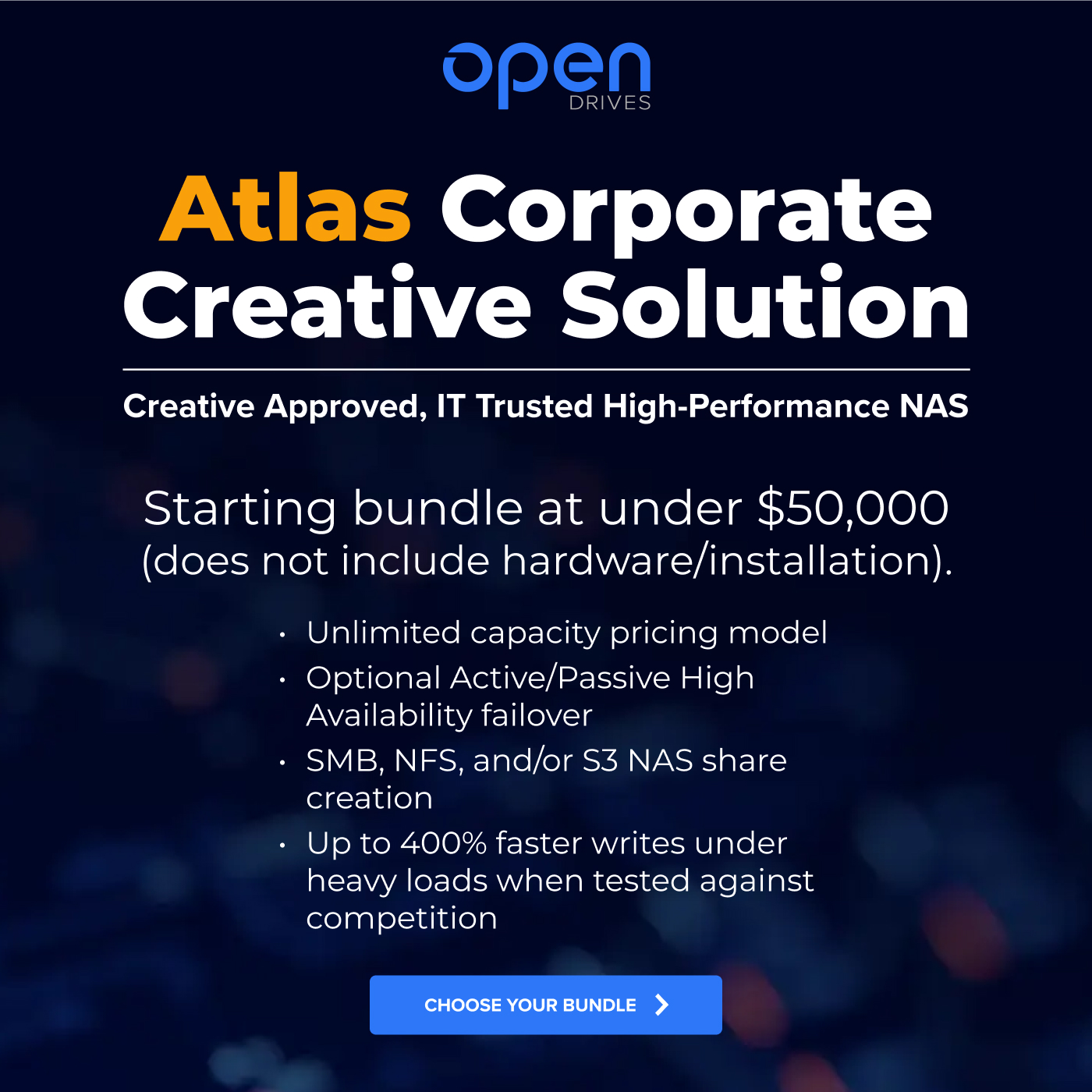
Hybrid or Cloud – Essential Cost Optimization Strategies for Your Sports Broadcast Workflow
In the fast-paced world of professional sports media, content AND data are the star players. From game footage and player stats to marketing content and fan engagement analytics, sports organizations generate massive amounts of media and information. Managing and storing this content, metadata and associated details efficiently can be a daunting task, but with the power of cloud technology, it becomes significantly more manageable. However, leveraging the benefits of the cloud without incurring exorbitant costs over time requires a strategic approach. This is particularly important for broadcast engineers, IT managers, and other stakeholders responsible for high-value assets.
It’s important to note that the journey to the cloud is not an all-or-nothing proposition. The goal is always to build a storage infrastructure that optimizes costs and efficiencies and maximizes performance for your specific sports broadcast workflow. Today, that is most often a mix of on-premise and cloud.
In this blog post, we will explore five ways professional sports teams, leagues, federations, broadcasters and organizations can optimize cloud storage costs. We will also address areas where cloud may not make sense. By better understanding cloud capabilities (and limitations), developing a robust content strategy, choosing the right cloud vendor, managing data lifecycle effectively, and engaging cloud-savvy systems integrators early on, your organization can achieve greater efficiency and substantial cost savings.
Let’s dive in.
Key Takeaways
- Develop a robust content strategy tailored to your audience and content lifecycle.
- Understand cloud capabilities and expectations before moving to the cloud.
- Avoid over-subscribing to cloud services; match needs to the right solution and vendor.
- Engage systems integrators early to design an optimal cloud architecture.
- Treat cloud costs as an ongoing operational expense, not a one-time purchase.
Content Strategy: The Foundation of Cost Optimization
Analyze Your Audience and Content Needs
Before migrating any part of your production and sports broadcast workflow to the cloud, organizations must develop a thorough content strategy. This involves understanding the preferences of your audience, which can include anyone from casual viewers to ardent fans, sponsors, partners, press, and more. Tailoring your content to meet their needs is crucial for engagement and cost efficiency.
Personalize Content Based on Data Analytics
Once you understand your audience, personalization is key. Utilizing data analytics to identify patterns in engagement and content performance. In professional sports, getting compelling content into the hands of fans is always the paramount goal, but just as important is understanding what kinds of content generates the most views and how it’s being consumed (e.g. over mobile, through sports news outlets). This will help you create personalized content opportunities that resonate with different segments of your audience, enhancing their experience. Content optimization and data analysis go hand-in-hand with controlling unnecessary costs because you’ll be dialed into delivering what viewers and business partners want through the right channels.
Understanding Cloud Scope: Define Your Goals
Clearly Define Your Cloud Objectives
Now that you have a focused content strategy, you can begin to consider how different options will best support you and where you are on your journey to the cloud. Like all technologies, cloud solutions like AWS and Microsoft Azure have their strengths and weaknesses. Knowing when and where cloud complements your content strategy is probably where most creative teams experience the most anxiety.
Eliminate the anxiety by defining your objectives upfront. Whether it’s improving data accessibility, enhancing collaboration, or ensuring data security, having specific objectives will guide your cloud strategy and empower you to make informed decisions.
Avoid the Lift-and-Shift Approach
The biggest and most common mistake is lifting and shifting all existing data to the cloud without a structured plan. Stop and think first: cloud services are renowned for their elasticity and for quick accessibility to on-demand compute power. On the other hand, this all comes with a price tag, and cloud services are still not a perfect substitute for workflows demanding intense GPU resources.
On-Prem May Be Your Best Bet for Certain Production and Sports Broadcast Workflows
It’s tempting to move everything to an operational cost, but your content strategy will dictate where it’s appropriate to take advantage of the cloud’s accessibility versus where on-prem storage makes sense. Placing an on-prem system behind your ingest servers can enable high-speed top/tail highlighting while your team is still on the field, whereas an accessible cloud data store makes it cheap and easy to keep archival content for sizzle reels or documentaries. For most groups, a balanced approach will help you meet targets and preserve budget.
Choosing the Right Cloud Vendor: Aligning Needs and Solutions
Evaluate Vendors Based on Content Strategy
Cloud services come in various forms, each offering different capabilities and pricing models. Avoid over provisioning by matching services to your actual needs. Some services focus their pricing on ingest/egress fees, making them well-suited to deep archives for cold data. Other services place more of an emphasis on storage consumption over transfer costs, boosting their usefulness as an off-prem nearline.
Don’t Default to the Biggest Name
While prominent names like AWS, Google Cloud, and Microsoft Azure are often top of mind, they may not always be the best fit for your team’s specific requirements. Research and consider other options that may offer better technical sports broadcasters solutions and pricing structures for your needs. Some companies, like BackBlaze and Wasabi, cater to the needs of creatives with their pricing models and feature offerings.
Consider Long-Term Relationships
Choose a vendor that not only meets your current needs but can also scale with you as your sports broadcast workflow requirements evolve. Building a long-term relationship with a vendor can lead to better pricing, support, and integration over time.
Data Lifecycle Management: Optimize Storage Tiers
Understand Hot vs. Cold Data
Not all data needs to be accessed frequently. Categorize your data into hot (frequently accessed) and cold (infrequently accessed) tiers. Store hot data in higher-performance, more expensive storage, and cold data in lower-cost storage solutions. This approach significantly reduces overall storage costs.
Monetize Archived Content
Archived content, while not frequently accessed, can still hold value. Develop strategies to monetize this content when needed, such as through licensing deals or special event promotions. This can turn a storage expense into a revenue stream.
Leverage AI/ML for Automated Policies
Utilize AI and machine learning tools to analyze data usage patterns and automate data lifecycle management policies. These tools can help you optimize storage usage by automatically moving data between tiers based on access patterns, further reducing costs.
Engage Systems Integrators: Expert Guidance for Optimal Architecture
Involve Integrators Early in the Process
Engage experienced systems integrators early in your cloud migration process. Their expertise can help design an optimal end-to-end cloud architecture tailored to your sports broadcast workflow specific needs, avoiding costly mistakes and ensuring a smooth transition whether you are going from on-prem to hybrid or hybrid to cloud. They will ensure the right players and game plan are in place for you.
Leverage Integrator Vendor Knowledge
Systems integrators often have in-depth knowledge of various cloud vendors and their offerings. They can provide valuable insights into which vendors and sports broadcasters solutions best fit your requirements, helping you make informed decisions.
Optimize End-to-End Workflows
Integrators can also help streamline your workflows, ensuring that your cloud architecture supports your content strategy and operational needs efficiently. This holistic approach minimizes redundancies and maximizes cost savings.
Treat Cloud Costs as Ongoing Operational Expenses
Budget for Continuous Costs
Unlike traditional IT infrastructure, cloud costs are ongoing operational expenses rather than one-time capital expenditures. Budget accordingly to ensure you can sustain these costs over time without financial strain.
Monitor and Adjust Regularly
Regularly monitor your cloud usage and costs. Use analytics and reporting tools to gain insights into where you can optimize further. Adjust your strategies as needed to stay within budget while maximizing efficiency.
Stay Updated with Cloud Innovations
The cloud technology landscape is continually evolving. Stay informed about new features, pricing changes, and innovations offered by your cloud vendor. This knowledge can help you leverage the latest advancements to optimize costs and improve performance.
Conclusion: Mastering Cloud Storage Cost Optimization
Optimizing cloud storage costs for sports broadcast workflow is not a one-time task but an ongoing process that requires strategic planning and continuous monitoring. By developing a robust content strategy, understanding your cloud scope, choosing the right vendor, managing data lifecycle effectively, and engaging systems integrators early, you can achieve significant cost savings and operational efficiencies.
As you embark on this journey, remember that the key to success lies in a balanced approach that aligns with your team’s unique needs and goals. Stay proactive, adapt to changing technologies, and continuously seek ways to optimize your cloud strategies that improve your sports broadcast workflow.
Ready to take the next step? Let’s talk.


